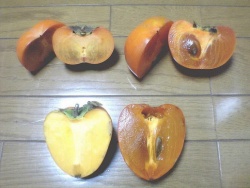Astringent
1. Medicine Tending to draw together or constrict tissues; styptic.
2. Sharp and penetrating; pungent or severe: astringent remarks.
n.
A substance or preparation, such as alum, that draws together or constricts body tissues and is effective in stopping the flow of blood or other secretions.
1. severe; harsh
2. sharp or invigorating
3. (Medicine) causing contraction of body tissues, checking blood flow, or restricting secretions of fluids; styptic
n
(Medicine / Pharmacology) an astringent drug or lotion
[from Latin astringēns drawing together; see astrict]
astringency , astringence n
astringently adv
An astringent (occasional alternative: adstringent) substance is a chemical compound that tends to shrink or constrict body tissues, usually locally after topical medicinal application. The word "astringent" derives from Latin adstringere, meaning "to bind fast". Two common examples are calamine lotion and witch hazel.
Astringency is also the dry, puckering mouthfeel caused by tannins found in many fruits such as blackthorn (sloe berries), chokecherry, bird cherry, quince and persimmon fruits, and banana skins. The tannins (or alternatively the polyphenols) bind the salivary proteins, causing them to precipitate or aggregate and lead to a rough "sandpapery" or dry sensation in the mouth. Tannins, which are widespread astringent compounds, are found in some red wines and teas. A small amount of astringency is expected in some wines, especially young red wines made from grapes such as cabernet sauvignon and merlot.
Uses
Astringent medicines cause shrinkage of mucous membranes or exposed tissues and are often used internally to check discharge of blood serum or mucous secretions. This can happen with a sore throat, hemorrhages, diarrhea, or with peptic ulcers. Externally applied astringents, which cause mild coagulation of skin proteins, dry, harden, and protect the skin. Acne sufferers are often advised to use astringents if they have oily skin. Mild astringent solutions are used in the relief of such minor skin irritations as those resulting from superficial cuts, allergies, insect bites, or fungal infections such as athlete's foot.
Some common astringent agents include alum, oatmeal, acacia, sage, yarrow, witch hazel, bayberry, distilled vinegar, very cold water, and rubbing alcohol. Astringent preparations include silver nitrate, potassium permanganate, zinc oxide, zinc sulfate, Burow's solution, tincture of benzoin, and vegetable substances such as tannic and gallic acids. Balaustines are the red rose-like flowers of the pomegranate, which are very bitter to the taste. In medicine, its dried form has been used as an astringent. Some metal salts and acids have also been used as astringents. Redness-reducing eye drops contain an astringent. In the past, Goulard's Extract was used, but is now discontinued.
